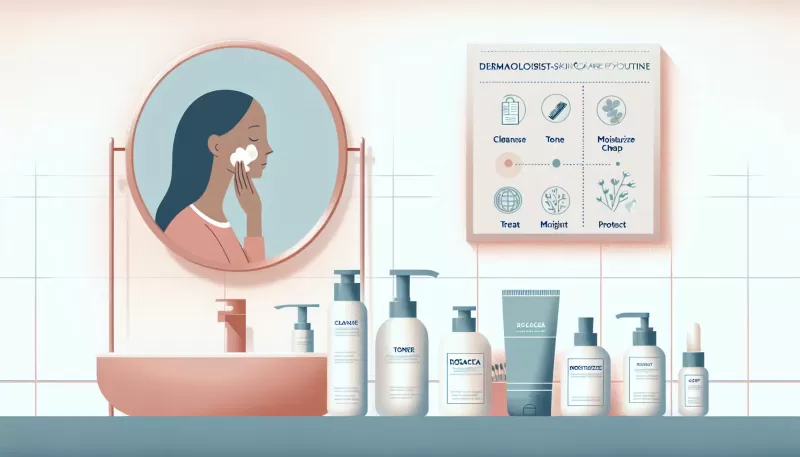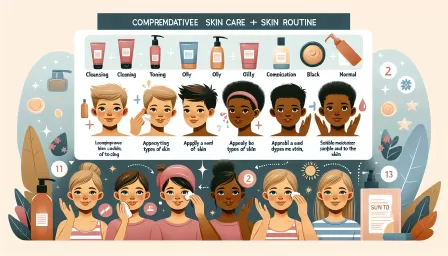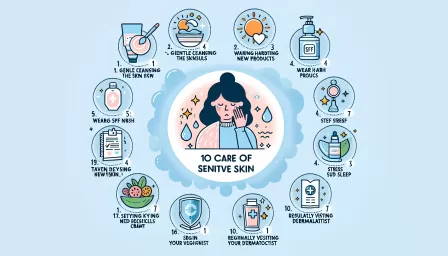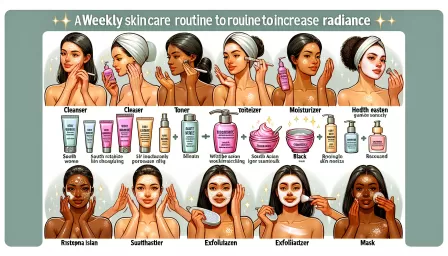Essential Steps in a Dermatologist Recommended Skin Care Routine for Rosacea

Learn the essential steps in a dermatologist recommended skin care routine for rosacea, including gentle cleansing, moisturizing, sun protection, and more.
Rosacea is a chronic skin condition characterized by facial redness, swelling, and sometimes acne-like bumps. Managing rosacea effectively requires a consistent and gentle skin care routine. This article outlines the essential steps in a dermatologist recommended skin care routine for rosacea, providing practical tips and solutions to help you achieve and maintain clear, calm skin.
Understanding Rosacea
Rosacea is a common skin condition that affects millions of people worldwide. While the exact cause is not fully understood, factors such as genetics, immune response, and environmental triggers play a role. It's essential to understand the specific needs of rosacea-prone skin to mitigate flare-ups and maintain healthier skin.
Step 1: Gentle Cleansing
Cleaning your skin is the first step in any dermatologist recommended skin care routine for rosacea.
Choosing the Right Cleanser
Opt for a cleanser that is gentle, fragrance-free, and formulated for sensitive skin. Avoid harsh soaps or exfoliants, as these can irritate your skin and exacerbate rosacea symptoms.
How to Cleanse Properly
- Use lukewarm water, as hot water can promote redness and irritation.
- Apply the cleanser with your fingertips in a circular motion.
- Rinse thoroughly but gently, ensuring no residue is left on the skin.
- Pat your face dry with a soft, clean towel.
Step 2: Moisturizing
Keeping your skin hydrated is crucial, especially for those with rosacea.
Choosing a Suitable Moisturizer
Look for a moisturizer that is non-comedogenic, fragrance-free, and hypoallergenic. Ingredients like ceramides, glycerin, and hyaluronic acid can help reinforce your skin's barrier without causing irritation.
Application Tips
- Apply moisturizer twice daily—once in the morning and once before bed.
- Use gentle, upward strokes to apply the product and avoid excessive rubbing.
- Ensure your skin is slightly damp before applying the moisturizer for better absorption.
Step 3: Sun Protection
Sun exposure can trigger rosacea flare-ups. Hence, protecting your skin from harmful UV rays is a non-negotiable step in your skin care routine.
Selecting the Right Sunscreen
Choose a physical (mineral) sunscreen with active ingredients like zinc oxide or titanium dioxide. These are less likely to cause irritation compared to chemical sunscreens.
Proper Sunscreen Application
- Apply a broad-spectrum SPF 30 or higher every morning.
- Reapply every two hours if you are exposed to the sun for prolonged periods.
- Don protective clothing and wide-brimmed hats for extra protection.
Step 4: Targeted Treatments
In addition to cleansing, moisturizing, and protecting your skin, targeted treatments can address specific rosacea symptoms.
Topical Treatments
Consult a dermatologist for prescription treatments like metronidazole, azelaic acid, or ivermectin, which can help reduce redness and inflammation.
Oral Medications
For more severe cases, oral antibiotics or other medications may be prescribed to manage rosacea symptoms effectively.
Step 5: Lifestyle Changes
Several lifestyle alterations can complement your skin care routine and help manage rosacea.
Dietary Adjustments
Avoid trigger foods that can exacerbate rosacea, such as spicy foods, hot beverages, and alcohol. A balanced diet rich in fruits, vegetables, and omega-3 fatty acids can promote overall skin health.
Stress Management
Stress is a common trigger for rosacea. Techniques such as yoga, meditation, and deep-breathing exercises can help manage stress levels.
Step 6: Regular Dermatology Check-ups
Frequent consultations with a dermatologist are crucial for monitoring your condition and adjusting your skin care routine as needed. They can provide personalized recommendations and treatments that suit your specific needs.
Conclusion
Managing rosacea effectively involves a comprehensive approach that includes gentle cleansing, moisturizing, sun protection, targeted treatments, and lifestyle changes. By following this dermatologist recommended skin care routine for rosacea, you can significantly reduce flare-ups and maintain healthier skin. Regular check-ups with your dermatologist will ensure that your routine remains effective and tailored to your evolving skin needs.



























